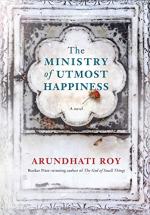|
This section contains 2,148 words (approx. 6 pages at 400 words per page) |

|
Motherhood
Despite its characters who interpret motherhood as the duty of individual mothers, the novel suggests that in reality motherhood is a gift and responsibility undertaken and shared by an entire community of people. In part, the communal nature of motherhood is a function of state violence directed against women, separating mothers from their daughters. This seems to be the case for the novel’s biological mothers, who are scarce or altogether absent in the novel. For example, Jahanara Begum sees her daughter Anjum only intermittently throughout their lives, as does Tilo’s mother, Maryam Ipe. Meanwhile, state violence against communists forces Comrade Maase Revathy to choose between defending her people and being a mother to her daughter. In another example, shots fired by soldiers kill both Arifa and Miss Jebeen the Second, separating mother from daughter through death.
By way of contrast, the novel also includes...
|
This section contains 2,148 words (approx. 6 pages at 400 words per page) |

|




